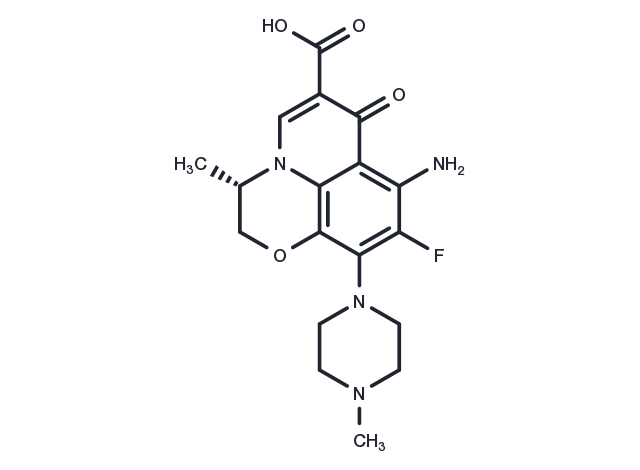Powder: -20°C for 3 years | In solvent: -80°C for 1 year


Antofloxacin is a well-tolerated, orally active, and broad-spectrum 8-amino-fluoroquinolone compound that exhibits potent antibacterial properties. It demonstrates superior activity against gyrA mutation-positive Helicobacter pylori strains, particularly in strains with mutations in the Asn87 position, when compared to levofloxacin. Additionally, Antofloxacin acts as a weak but reversible inhibitor of CYP1A2 and is clinically used to treat infections caused by various bacterial species.

| Pack Size | Availability | Price/USD | Quantity |
|---|---|---|---|
| 5 mg | Inquiry | $ 970.00 |
| Description | Antofloxacin is a well-tolerated, orally active, and broad-spectrum 8-amino-fluoroquinolone compound that exhibits potent antibacterial properties. It demonstrates superior activity against gyrA mutation-positive Helicobacter pylori strains, particularly in strains with mutations in the Asn87 position, when compared to levofloxacin. Additionally, Antofloxacin acts as a weak but reversible inhibitor of CYP1A2 and is clinically used to treat infections caused by various bacterial species. |
| In vivo | Administered subcutaneously to mice at doses ranging from 2.5 to 160 mg/kg over a 24-hour period, antofloxacin's penetration ratio for total drug concentrations varied between 1.22 and 1.54, showing no relation to the dosage levels [3]. Additionally, antofloxacin elevates plasma theophylline levels by functioning as a mechanism-based inhibitor of the CYP1A2 enzyme. This inhibition effect on the formation of the three metabolites of theophylline demonstrates a dependency on time, concentration, and the presence of NADPH, indicative of mechanism-based inhibition [2]. |
| Molecular Weight | 376.388 |
| Formula | C18H21FN4O4 |
| CAS No. | 119354-43-7 |
Powder: -20°C for 3 years | In solvent: -80°C for 1 year
You can also refer to dose conversion for different animals. More
bottom
Please see Inhibitor Handling Instructions for more frequently ask questions. Topics include: how to prepare stock solutions, how to store products, and cautions on cell-based assays & animal experiments, etc.
Antofloxacin 119354-43-7 inhibitor inhibit
